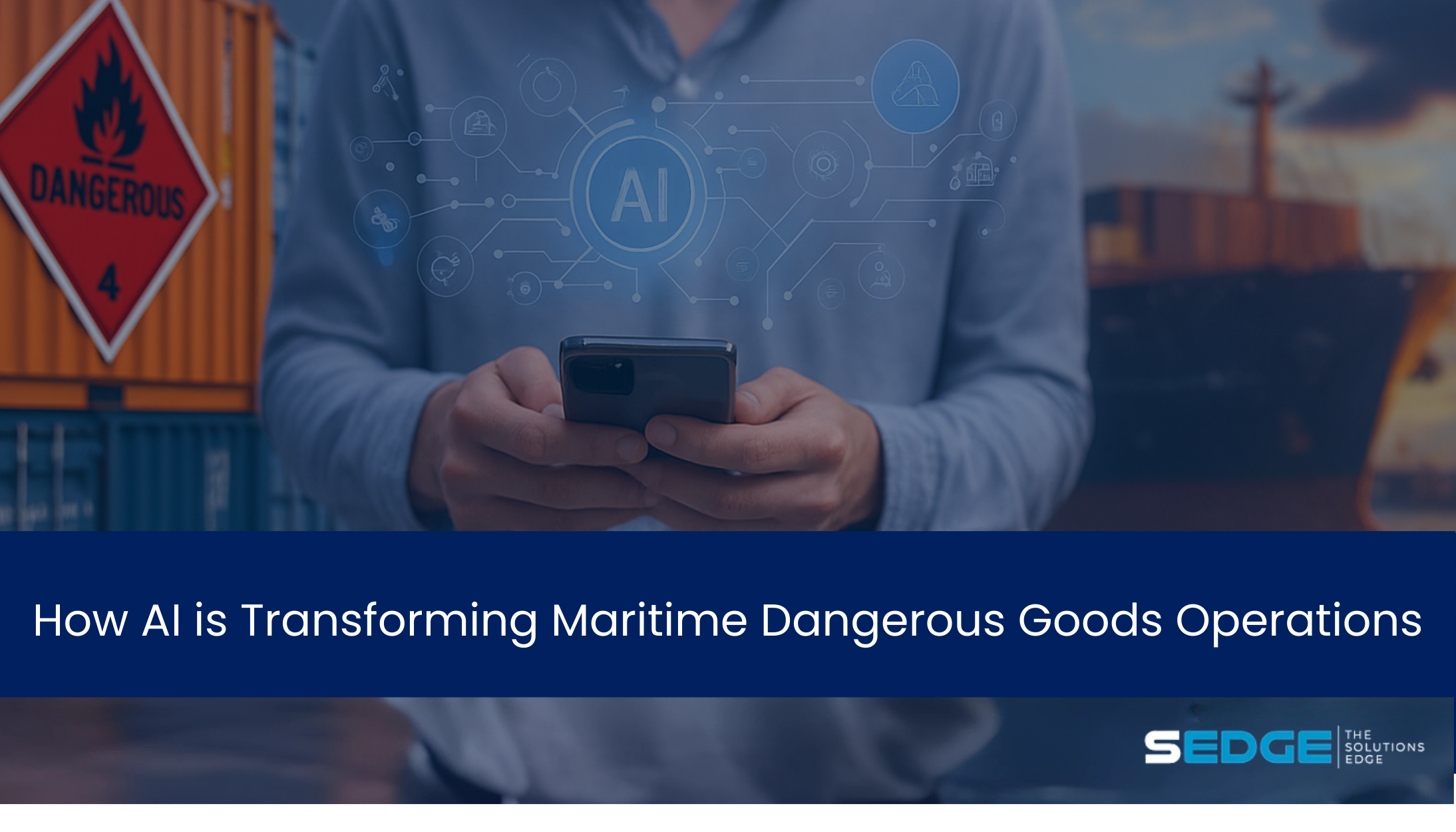
From 48 Hours to 10 Minutes- How AI is Transforming Maritime Dangerous Goods Operations
1. Executive Summary
DG approval and documentation processing delays cost the shipping industry $3 billion annually [1], while dangerous goods compliance failures create catastrophic safety and financial risks. This white paper examines how industry leaders are eliminating the dangerous goods approval bottleneck transforming 48-hour manual processes into 10-minute automated responses through AI-powered automation that delivers both immediate competitive advantage and long-term strategic value.
Drawing on analysis of global maritime operations and regulatory compliance data, we explore how implementation of advanced DG automation solutions like ASTRA DG Bot delivers transformational improvements in processing speed, compliance accuracy, and operational efficiency achieving:
-
Processing time reduction from 48 hours to 10 minutes
-
90% decrease in human error rates and compliance violations
-
24/7 operational capability across all time zones
-
Regulatory compliance with IMDG Code, SOLAS, and MARPOL requirements
-
Complete elimination of weekend and holiday processing delays
-
Significant improvement in customer retention and market share gro
2. The Problem Statement: The $3 Billion Crisis Hiding in Plain Sight
Documentation processing delays alone cost the global shipping industry $3 billion annually, with dangerous goods operations representing the most critical and vulnerable segment of this massive inefficiency. For shipping lines operating in today’s hyper-competitive environment, dangerous goods processing represents far more than an operational challenge, it’s a strategic vulnerability that directly impacts profitability, safety, regulatory compliance, and market position.
While we do not reside in the dark ages, many CEOs find themselves trapped in the dark due to a lack of clarity with no access to the insights hidden in their data lakes or warehouses.
Research reveals that 34% of dangerous goods shipments have compliance deficiencies during inspections, while hazardous cargo operations face a 21.56% accident probability under normal conditions. [i] These statistics represent not just operational failures, but existential threats to shipping line viability in an industry where a single major incident can cost hundreds of millions in penalties, cleanup costs, and reputational damage.
The table below shows an article, identifying factors and their causal relationship, based on 348 past accidents for the period 1990 to 2018. The results indicate human & management factors having, the high probability of an accident. In this study the relevant portion is the Registration and Management probability which can be minimized with AI automation.
| Node | State Probabilities | Node | State Probabilities | ||
|---|---|---|---|---|---|
| 0 | 1 | 0 | 1 | ||
| Natural Factors | 78.44 | 21.56 | Operations | 40.35 | 59.65 |
| Safety Protocols | 23.49 | 76.51 | Warehousing | 70.21 | 29.79 |
| Registration | 58.61 | 41.39 | Organizational Factors | 47.57 | 52.43 |
| Management | 16.94 | 83.06 | Experience | 39.46 | 60.54 |
| Equipment | 63.58 | 36.42 | Attitude | 29.73 | 70.27 |
| Infrastructure | 61.95 | 38.05 | Qualification | 39.46 | 60.54 |
| Facilities | 49.01 | 50.99 | Human Factors | 22.26 | 77.74 |
| Emergency | 30.36 | 69.64 | |||
Source- Accident and pollution risk assessment for hazardous cargo in a port environment. https://pmc.ncbi.nlm.nih.gov/articles/PMC8177640/table/pone.0252732.t002/
3. Introduction: When Customer Demands Meet Regulatory Requirements
The maritime industry operates under a fundamental tension: customers demand immediate responses to booking requests, while dangerous goods regulations require thorough, careful evaluation of complex safety and compliance factors. This creates operational challenges that affect both customer relationships and safety outcomes, with consequences measured not just in lost revenue, but in potential loss of life and environmental catastrophe.
Consider this all-too-common scenario: A pharmaceutical company submits urgent dangerous goods booking request Friday afternoon for time-sensitive medical supplies destined for a humanitarian crisis. Under traditional manual processes, this request sits unprocessed until Monday morning, potentially costing lives while the shipping line loses a high-value customer to a competitor with faster response capabilities.
This operational pattern creates cascading business problems:
-
Revenue hemorrhaging: Lost bookings due to delayed responses during weekends, holidays, and off-hours when competitors can respond faster
-
Compliance exposure: Manual processing increases error probability, with each mistake potentially triggering regulatory investigations and penalties
-
Safety risks: Processing errors in dangerous goods create potential maritime disasters with catastrophic consequences
-
Customer defection: Shippers increasingly select carriers based on response speed rather than traditional factors like price or route coverage
-
Scalability barriers: Manual processes cannot scale with growing dangerous goods volumes or increasing regulatory complexity.
4. Navigating Dynamic & Complex Regulatory Requirements
Modern shipping operations must navigate an increasingly complex web of dangerous goods regulations that evolve continuously and require specialized expertise to interpret correctly. The International Maritime Dangerous Goods (IMDG) Code, SOLAS Chapter VII provisions, MARPOL Annex III requirements, and numerous port-specific restrictions create a regulatory framework that challenges even the most experienced maritime professionals.
McKinsey research demonstrates that AI and automation technologies have the potential to automate up to 70% of current maritime activities[i], yet dangerous goods operations remain trapped in manual processes designed for a pre-container era. This creates a fundamental disconnect between available technology capabilities and operational reality.
Dangerous goods represent a significant and growing portion of containerized trade, driven by expansion in pharmaceuticals, electronics (particularly lithium batteries), and chemical products. This growth coincides with increasing regulatory complexity as authorities worldwide enhance safety requirements and enforcement measures.
Current DG desk operations in many shipping lines still rely on processes that create inherent vulnerabilities:
-
Email-Based Workflows: DG booking requests typically arrive as emails with multiple attachments that require manual review and data extraction, creating bottlenecks and opportunities for human error.
-
Reference-Based Evaluation: Staff manually cross-reference booking details against printed or PDF versions of regulatory documents, vessel certificates, and port restrictions—a time-intensive process prone to oversight.
-
Sequential Approval Processes: Multiple departments must coordinate on approvals, each introducing potential delays and communication failures.
Expert Knowledge Dependencies: Operations require certified DG specialists with comprehensive knowledge of IMO regulations, port-specific restrictions, co-load compatibility matrices, stowage segregation rules, and vessel-specific limitations. This expertise is scarce, expensive, and difficult to scale across time zones, while concentrating critical knowledge in specific individuals creates single points of failure when key staff are unavailable.
Key operational questions that DG desk teams must answer include:
-
Does this cargo classification require specific stowage or segregation requirements relative to other loaded cargo?
-
Are the vessel’s documents of compliance current and adequate for this specific dangerous goods type?
-
What are the detailed handling and documentation requirements at each port in the intended rotation?
-
Are there seasonal, weather-related, or temporary restrictions that might affect this shipment?
These questions currently require time-consuming manual research across fragmented information sources, creating delays that competitive markets increasingly cannot tolerate.
5. The Complexity Challenge
The nature of dangerous goods operations creates complexity that overwhelms traditional manual processing methods. IMO inspection data shows that 34% of dangerous goods shipments have deficiencies, demonstrating the difficulty of maintaining compliance through human-dependent processes.
A typical DG booking evaluation involves multiple interconnected considerations:
-
Regulatory Compliance Matrix: Ensuring adherence to IMDG Code classifications, SOLAS requirements, MARPOL restrictions, and country-specific regulations, each with frequent updates and amendments
-
Vessel Compatibility Assessment: Verifying that vessel certificates, crew qualifications, and equipment meet requirements for the specific cargo type and planned routing
-
Port Requirements Validation: Confirming that each port in the rotation can handle the cargo type and that all documentation meets evolving local standards
-
Dynamic Stowage and Segregation: Determining proper placement aboard the vessel relative to other cargo types, vessel systems, and safety requirements
-
Documentation Standards Verification: Ensuring shipper declarations, safety data sheets, and certificates meet current regulatory standards across multiple jurisdictions
Manual processing of these interconnected requirements creates bottlenecks that competitive markets increasingly reject, while the complexity continues growing as regulations evolve and trade volumes expand.
6. Case Study: The Breaking Point
To illustrate the critical challenges facing DG operations, consider the experience of a established middle east based shipping line that approached Solverminds after recognizing that they were receiving large number of DG bookings and the current DG desk was overwhelmed with approval and acceptance and were not able to match the speed at which they were receiving the request and their current approach had become unsustainable. This company was experiencing:
-
DG booking response times extending well beyond customer expectations, particularly during weekends and holidays when competitors maintained faster response capabilities
-
Processing errors that resulted in customer complaints, regulatory scrutiny, and potential safety exposure
-
Staff burnout from overtime requirements to handle DG processing outside normal business hours
-
Inability to scale operations to handle seasonal volume increases or capture growth opportunities
-
Inconsistent service levels across different time zones, creating competitive disadvantages in global markets
The company’s DG desk team possessed strong technical expertise, but the manual nature of their workflows created inherent limitations in processing speed and availability. During peak periods, response times could extend beyond 48 hours, causing some customers to select competitors solely based on faster approval capabilities.
Most critically, the company recognized that their current approach would become increasingly unsustainable as dangerous goods volumes continued growing and customer expectations for immediate service response continued rising. The choice was clear: transform their operations through automation or accept declining market share in this high-value segment.
7. The Solution: ASTRA DG Bot - Intelligence-Driven Transformation
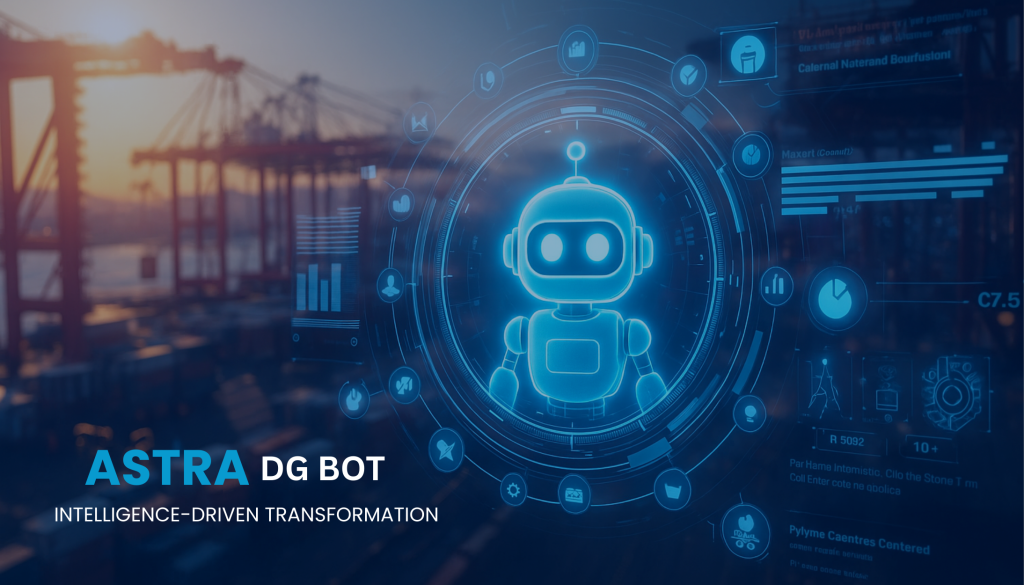
Rather than attempting to solve capacity constraints through additional staffing (challenge was finding qualified and experienced resource), an approach that would not address fundamental process limitations, the shipping line chose to implement Solverminds’ ASTRA DG Bot, an AI-powered solution to automate and enhance dangerous goods processing workflows.
ASTRA DG Bot was developed to address the unique challenges of maritime dangerous goods operations, combining deep regulatory expertise with advanced automation capabilities to create a comprehensive solution that acts as an intelligent assistant to DG desk teams rather than a replacement.
8. Key Implementation Elements
The ASTRA DG Bot implementation focused on several core automation capabilities that transform the entire dangerous goods approval workflow:
a. AI-Driven Data Extraction and Communication
The system employs advanced natural language processing and document analysis to automatically extract relevant information from DG booking requests, regardless of format or complexity. Key capabilities include:
-
Intelligent Email Analysis: Automatically processes incoming DG booking emails and identifies key information such as cargo details, routing requirements, and documentation
-
Document Processing: Analyzes PDF safety data sheets, shipper declarations, and certificates to extract critical data points
-
Automated Information Gathering: Communicates directly with customers to request missing information or clarifications, maintaining professional communication standards
-
Data Validation: Cross-references extracted information against multiple databases to identify potential inconsistencies or errors
This capability eliminates the manual data entry and document review that traditionally consumed significant staff time while introducing opportunities for human error.
b. Comprehensive Compliance Validation Engine
ASTRA DG Bot incorporates continuously updated regulatory databases and sophisticated validation engines that automatically evaluate booking requests against comprehensive compliance requirements:
-
IMDG Code Compliance: Validates cargo classifications, packaging requirements, and transport provisions against current IMDG Code standards
-
SOLAS Chapter VII Requirements: Ensures vessel and operational compliance with international safety standards
-
MARPOL Annex III Provisions: Verifies environmental protection compliance for marine pollutant cargoes
-
Vessel Document Validation: Checks vessel Document of Compliance (DOC) status and crew certification requirements
-
Port-Specific Restrictions: Evaluates cargo acceptance against individual port dangerous goods policies and seasonal restrictions
-
Company Risk Parameters: Applies company-specific policies and risk management criteria to approval decisions
The system maintains current information across all regulatory frameworks, ensuring every decision reflects the most recent requirements and amendments.
c. Intelligent Process Automation and Workflow Management
The platform automates the complete DG approval workflow while maintaining appropriate human oversight:
-
Automated Request Processing: Receives, analyzes, and processes DG booking requests without human intervention for routine cases
-
Compliance Assessment: Performs comprehensive regulatory compliance checking across all applicable frameworks
-
Customer Communication: Manages customer interactions, including requests for additional information and status updates. Updates customer with DG approval number and Booking confirmation details.
-
Decision Support: Provides consolidated recommendations to DG desk teams with detailed supporting analysis
-
Exception Handling: Routes complex or unusual cases to human experts while handling routine approvals automatically
d. Seamless ERP Integration and Data Management
ASTRA DG Bot integrates seamlessly with existing shipping line systems and workflows:
-
Real-Time ERP Integration: Connects with Solverminds’ Liner ERP system and other platforms for automatic booking creation and processing
-
Dynamic Route Information: Accesses current vessel schedules, routing data, and operational information to ensure accurate assessments
-
Automated Downstream Processing: Triggers appropriate follow-up processes once DG cargo is approved
-
Comprehensive Audit Trails: Maintains detailed records of all decisions and communications for regulatory compliance and performance analysis
e. Customer Query Support and Knowledge Management
The system provides comprehensive support for routine customer and operations team inquiries:
-
Standard Operating Procedures: Responds to queries about port-specific dangerous goods handling requirements and procedures
-
Documentation Guidance: Provides information about required documentation and submission procedures
-
Regulatory Updates: Communicates relevant regulatory changes (source 3rd party API) and their impact on customer operations.
-
Status Tracking: Provides real-time updates on booking approval status and processing progress
9. Implementation Results
Following implementation of ASTRA DG Bot, the shipping line achieved transformational improvements across all key performance metrics:
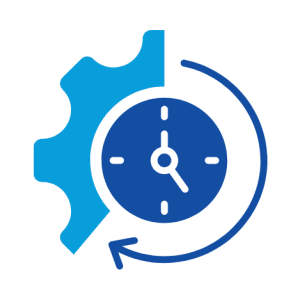
Processing Time Revolution: Response times decreased from an average of 48 hours to approximately 10 minutes for routine booking improvement that fundamentally altered competitive positioning
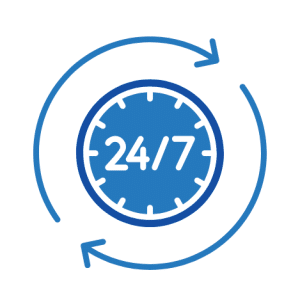
24/7 Global Availability: Customers can receive responses to DG booking requests at any time, regardless of time zone or business hours, eliminating weekend and holiday delays

Accuracy Enhancement: Automated compliance validation reduced processing errors by over 90%, eliminating most regulatory compliance issues businesses.
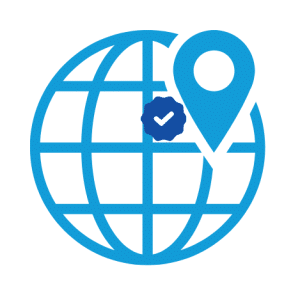
Service Consistency: Standardized processing ensures consistent service quality across all customer interactions and geographic regions.

Staff Productivity: DG desk teams can focus on complex analysis, customer relationship management, and strategic initiatives rather than routine processing tasks

Scalability Achievement: The system handles volume increases without proportional staff increases, enabling profitable growth in dangerous goods services times more for businesses.
10. The Technology Platform: Comprehensive DG Automation
The case study demonstrates the transformative potential of purpose-built AI technology for dangerous goods operations. The maritime automation market, valued at $6.06 billion in 2023 and growing at 8.9% annually[i], reflects industry recognition that such solutions are becoming essential for competitive survival.
ASTRA DG Bot exemplifies the key capabilities shipping lines should consider when evaluating automation solutions.
11. Essential System Capabilities
Advanced AI and Natural Language Processing Framework
-
Document Intelligence: Natural language processing for email and document interpretation across multiple languages and formats
-
Reinforcement Learning: Continuous improvement algorithms that learn from processing patterns and outcomes
-
Conversational AI: Professional customer communication capabilities that maintain service quality standards
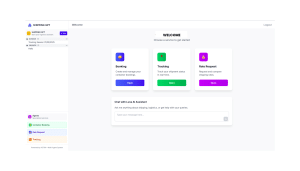
Comprehensive Regulatory Intelligence Database
-
Current IMDG Code: Complete provisions with automated updates for amendments and interpretations (3rd Party DG Compliance platforms)
-
SOLAS Compliance: Chapter VII requirements and current enforcement interpretations (Vessel DOC database)
-
MARPOL Standards: Annex III restrictions and environmental protection guidelines (3rd Party DG Compliance platforms)
-
Global Port Database: Port-specific dangerous goods regulations and seasonal restrictions for terminals worldwide (Company specific data)
-
Vessel Documentation: Document of compliance validation and crew certification requirements (Vessel DOC)
-
Company Policies: Customizable risk management parameters and approval workflows (Company specific DG carriage policies)
Enterprise Integration and Connectivity
-
API-Based Architecture: Seamless connectivity with existing shipping line systems and databases
-
Real-Time Data Exchange: Continuous synchronization with operational systems and external data sources
-
Liner ERP Integration: Automated booking creation and downstream process management
-
Performance Analytics: Comprehensive reporting and continuous improvement recommendations
Decision Support and Transparency
-
Detailed Audit Trails: Complete documentation of all automated decisions and supporting analysis. Parsed Emails can be viewed as to how the data was extracted.
-
Exception Management: Intelligent routing of complex cases to appropriate human experts.
-
Performance Monitoring: Real-time tracking of system performance and customer satisfaction metrics
-
Customizable Workflows: Flexible approval processes that accommodate company-specific requirements and risk tolerances
-
12. Implementation Best Practices
-
Based on successful implementations across multiple shipping lines, several key factors contribute to effective DG automation:
-
Comprehensive Documentation: Ensure all existing processes, policies, and requirements are clearly documented before automation implementation begins
-
Expert Collaboration: Combine AI automation capabilities with human expertise for complex or exceptional cases requiring judgment
-
Extensive Testing: Test automated processes thoroughly with historical data and edge cases before deploying to live operations
-
Continuous Improvement: Establish processes for ongoing system optimization based on performance data and user feedback
-
Staff Development: Help teams transition from manual processing to exception management and enhanced customer service roles, creating more engaging and strategic work
-
13. Why C-Suite Executives Should Prioritize ASTRA DG Bot
-
For senior maritime executives, ASTRA DG Bot represents more than operational improvement, it’s a strategic enabler that addresses multiple business priorities simultaneously:
Competitive Differentiation and Market Leadership
The system creates immediate competitive advantages through superior response times and service availability, enabling market share capture in high-value dangerous goods segments. Early adopters establish market leadership positions that become stronger as the technology advantage compounds over time.
Operational Scalability and Growth Management
ASTRA DG Bot handles growing DG volumes without proportional increases in staffing costs, enabling profitable expansion in dangerous goods services while maintaining service quality standards. This scalability supports strategic growth initiatives and market expansion plans.
Risk Management and Regulatory Compliance
Automated compliance checking reduces regulatory violations and associated penalties while maintaining comprehensive audit trails for transparency and accountability. The system adapts automatically to regulatory changes, ensuring sustained compliance without manual intervention.
Cost Optimization and Resource Allocation
Automation eliminates routine manual tasks and reduces overtime costs associated with after-hours DG processing requirements. Staff can focus on high-value activities like complex analysis, customer relationship management, and strategic planning rather than repetitive processing work.
Digital Transformation and Innovation Leadership
Implementation demonstrates commitment to innovation and positions the company as a technology leader in maritime services. This reputation attracts both customers and talent while supporting broader digital transformation initiatives.
Enhanced Customer Service and Satisfaction
24/7 availability and rapid response times create exceptional customer experiences that drive both retention and acquisition in the dangerous goods market segment. Superior service quality becomes a sustainable competitive advantage that supports premium pricing strategies.
14. The Future of Dangerous Goods Operations
-
Looking ahead, several trends will continue shaping dangerous goods operations:
Regulatory Evolution and Complexity Growth
DG regulations will continue evolving with increasing emphasis on environmental protection, safety enhancement, and digital documentation. Automated systems like ASTRA DG Bot can adapt more quickly to regulatory changes than manual processes, providing sustained competitive advantages. Reinforcement learning ensures that ASTRA can be taught to the evolving rules and changes to the DG operations.
Customer Expectations and Service Standards
Shippers will increasingly expect immediate responses and 24/7 availability from their service providers. Companies that cannot meet these expectations will face systematic customer defection to more responsive competitors.
Volume Growth and Capacity Pressures
Dangerous goods volumes will continue growing as global trade expands and new product categories emerge. Automated processing will become essential for managing this growth efficiently while maintaining safety and compliance standards.
Technology Integration and Supply Chain Visibility
Future DG operations will feature greater integration across the supply chain, providing end-to-end visibility and coordination from shipper to consignee. ASTRA DG Bot provides the technological foundation for participating in these integrated networks.
Sustainability and Environmental Responsibility
Environmental considerations will become increasingly central to dangerous goods operations as sustainability requirements expand. Automated systems can optimize environmental compliance while reducing operational carbon footprints through more efficient proces
15. Conclusion: From Operational Liability to Strategic Asset
-
The shipping lines that will dominate dangerous goods markets are those that recognize DG operations as a strategic differentiator worthy of technology investment and innovation. Manual processing methods that may have been adequate in previous decades are increasingly insufficient to meet current market demands for speed, accuracy, and availability.
The mathematics of this transformation are compelling: ASTRA DG Bot implementations typically achieve return on investment within 4-6 months through reduced processing costs, increased booking capture, and improved customer retention. More importantly, these systems create sustainable competitive advantages that strengthen over time as AI algorithms learn and improve while competitors remain constrained by manual process limitations.
The maritime automation market’s 8.9% annual growth rate reflects industry recognition that such solutions are becoming essential infrastructure rather than optional enhancements. Forward-thinking organizations are already implementing AI-driven automation to transform DG processing from operational bottlenecks into competitive weapons.
For companies competing in global dangerous goods markets, the question is not whether AI automation represents good value, it’s whether they can afford to compete against carriers who have already automated while they continue manual processing. The future belongs to shipping lines that embrace AI-driven transformation while maintaining the human expertise essential for complex decision-making.
ASTRA DG Bot provides a pathway to this future, combining the speed and consistency of artificial intelligence with the judgment and experience of maritime professionals. The time for incremental improvements has passed, the market now demands transformational change, and the technology to deliver it is available today.
16. About Solverminds and ASTRA DG Bot
Solverminds is a leading global technology company providing integrated ERP solutions, consulting, and advanced analytics to the maritime industry. Founded in 2003, Solverminds operates in over 90 countries with offices in Chennai, Singapore, Hamburg, Dubai, and Atlanta. Its comprehensive portfolio includes enterprise ERP (SVM ERP), AI-driven automation (ASTRA), optimization tools (SONATA, OptiBox, OptiFleet), and analytics solutions that empower shipping lines with cutting-edge digital transformation capabilities.
ASTRA DG Bot is Solverminds’ specialized AI-powered automation solution for dangerous goods desk operations, designed to help shipping lines process DG bookings faster, more accurately, and with greater availability than traditional manual methods. The system acts as an intelligent assistant to DG desk teams, handling routine tasks while preserving human oversight for complex cases, enabling shipping lines to operate more efficiently, safely, and competitively worldwide.
To learn more about how ASTRA DG Bot can transform your dangerous goods operations,
The information or views expressed in this article is authentic to the best of our knowledge, and as such, it is prone to errors and the absence of some key information, for more information please review our Terms of Use.
Solverminds is a global leader in AI-driven maritime software solutions, trusted by top shipping lines, NVOCCs, and feeder operators worldwide. Our mission is to help maritime businesses optimize operations, ensure compliance, and boost profitability through intelligent digital transformation
We offer ERP solutions, optimizers, ASTRA for intelligent process automation, and consultations for your company’s unique needs.
Contact us with a strong focus on digital transformation and sustainable shipping, we help maritime businesses meet IMO compliance, reduce costs, and optimize every aspect of their supply chain.